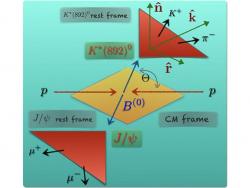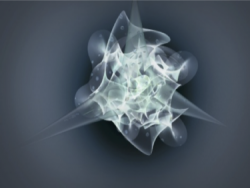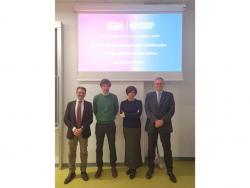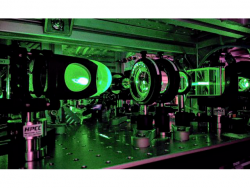- Home
- Department
- Research
- Teaching
- Post Graduate Studies
- Services and Equipment
- Knowledge Transfer
Synthetic diamond detectors
Research Strand:
 High-energy physics experiments at future accelerators such as the Super-B Factory and the Linear Collider will require tracking and vertex detectors with high-rate capabilities and a very low material budget. In many cases it will also be essential to obtain sophisticated trigger information from the tracking system, which can then be used for a first-level trigger.
High-energy physics experiments at future accelerators such as the Super-B Factory and the Linear Collider will require tracking and vertex detectors with high-rate capabilities and a very low material budget. In many cases it will also be essential to obtain sophisticated trigger information from the tracking system, which can then be used for a first-level trigger.
 The MIUR-funded PRIN-2009 program (a collaboration between research groups from several Italian universities) aims at improving the performance of pixel detectors in charged particle tracking in high-energy experiments, and more specifically, in situations of high particle rate, such as the inner detection layers of the Super-B tracker. Performance improvement requires both an increase in the "response speed" of the detection system, and greater "intelligence" in the system to reject background, while keeping to a minimum the amount of material in the various detection layers. Within the collaboration, the Trieste research unit is focusing on improving the speed of pixel detectors through the use of intrinsically faster sensors. Two possible technologies are being considered: diamond sensors, and silicon sensors with three-dimensional electrodes (3-D detectors). Both options are being pursued in cooperation with the microfabrication laboratory of FBK-irst (Trento), as a technology partner.
The MIUR-funded PRIN-2009 program (a collaboration between research groups from several Italian universities) aims at improving the performance of pixel detectors in charged particle tracking in high-energy experiments, and more specifically, in situations of high particle rate, such as the inner detection layers of the Super-B tracker. Performance improvement requires both an increase in the "response speed" of the detection system, and greater "intelligence" in the system to reject background, while keeping to a minimum the amount of material in the various detection layers. Within the collaboration, the Trieste research unit is focusing on improving the speed of pixel detectors through the use of intrinsically faster sensors. Two possible technologies are being considered: diamond sensors, and silicon sensors with three-dimensional electrodes (3-D detectors). Both options are being pursued in cooperation with the microfabrication laboratory of FBK-irst (Trento), as a technology partner.
The group is also involved in the optimization and characterization of silicon microstrip sensors in support of the Super-B and ALICE experiments, in the further development of silicon detectors with internal amplification based on the bipolar transistor effect (for applications in environmental monitoring), and in the characterization of the effects of radiation damage on various types of silicon sensors.
Info
Last update: 04-08-2024 - 20:50









